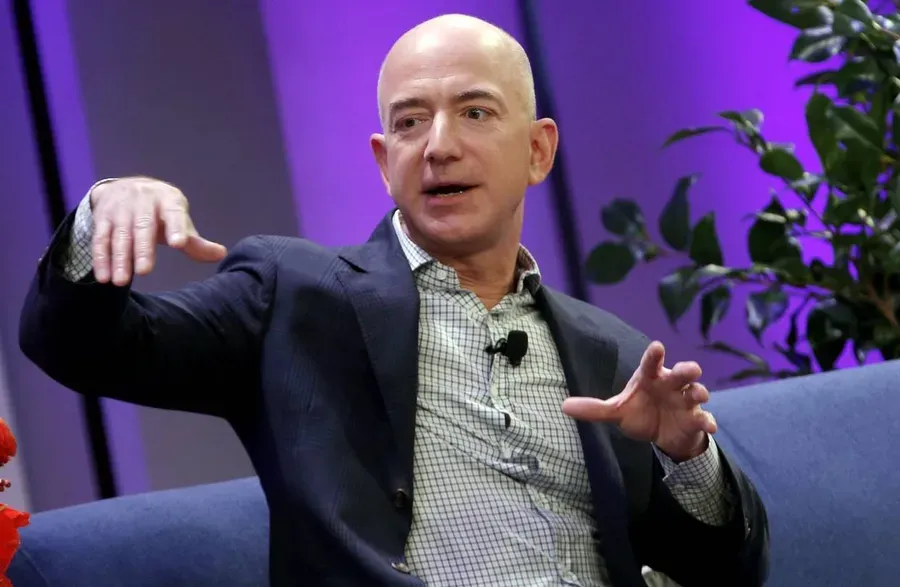Databricks Shoots $130B, Project Prometheus Lands $6.2B While Citi, Torex Accelerate AI & Semiconductor M&A

TL;DR
- AI Startups Secure Record Capital: Databricks Targets $130B, Project Prometheus Receives $6.2B, While PLEANTify Raises $15M Series‑A.
- Tech M&A Accelerates: Citi’s AI Deals and Torex Semiconductor’s $10B Acquisition Spotlight Strategic Growth.
- Tech Ecosystem Surge: Combined Funding ($130B+$6.2B+$15M) and M&A ($10B Torex Deal) Propel AI and Semiconductor Growth in 2025.
AI Startup Capital Surge: Why 2025 May Be the Year of Valuation Fever
Record‑Level Funding in Two Days
In a 48‑hour window AI‑focused companies announced $221.8 billion in capital commitments and valuation targets. The headline moves were:
- Databricks – negotiating a round that would lock in a $130 billion floor, a 30 % uplift from its prior $100 billion valuation.
- Project Prometheus (Jeff Bezos) – secured $6.2 billion of a $6.3 billion pool to build AI for “atoms rather than bits” in aerospace, automotive and manufacturing.
- PLEANTify – closed a $15 million Series‑A, confirming seed‑stage confidence in niche AI applications.
- AI‑security firms raised a collective $205.6 million across nine deals (four in Canada, two in Japan, one in the UK).
Why Valuations Are Escalating
Databricks’ 30 % uplift rests on a $105 billion total addressable market for its AI‑agent platform and an 80 % year‑over‑year growth metric. The recent $1 billion acquisition of Neon signals consolidation in the data‑lake space, expanding cross‑sell potential.
Project Prometheus’ talent pool—roughly 100 engineers poached from OpenAI, DeepMind and Meta—illustrates a rapid talent‑acquisition model aimed at industrial‑AI roadmaps. The funding mix blends Bezos’ personal capital with private investors, reinforcing the notion that legacy players are betting on hardware‑proximate AI.
Capital Allocation: Products vs. Services
97 % of the $205.6 million raised is earmarked for product‑centric firms delivering AI‑enabled tools, while 100 % of merger activity involves service‑oriented companies. This bifurcation suggests that equity fuels innovation, whereas acquisitions give established services a shortcut to embed AI talent.
Automation is already reshaping cost structures: Deepwatch cut 70 jobs and Bitdefender shed 125 staff as AI‑driven monitoring replaces manual processes.
Emerging Trends
- AI agents are becoming core enterprise assets, driving valuation lifts.
- Industrial AI receives capital on a multi‑billion scale.
- Data‑infrastructure consolidation accelerates (e.g., Neon deal).
- Geographic diversification shows modest growth in Canada, Japan and the UK.
Data‑Driven Outlook
Assuming Databricks’ 30 % annual uplift persists, its valuation could reach roughly $170 billion by FY 2027 (130 × 1.30²). Global AI venture funding, already 3 % above 2024 levels, is on track to surpass $1 trillion by 2028 if the pace holds. Talent migration toward industrial AI firms is likely to climb 10‑15 % annually, driven by funding scales similar to Project Prometheus.
AI‑Centric M&A: Citi’s Pivot and Torex’s $10 B Bet
Banking’s New Focus
- Q3 2025 market share fell to 4.8 %, down from 17 % in FY 2024.
- AI‑related mandates rose to 12 deals, a 35 % YoY increase.
- Average AI deal size reached $1.3 B, up 22 % YoY.
- Key talent migration: Vis Raghavan → JPMorgan; Phil Drury left TMT; Anthony Diamandakis joined JPMorgan.
The data reveal a bank shedding breadth to chase depth. While Citi’s overall transaction volume contracts, its AI pipeline expands both in count and ticket size. The bank’s strategy hinges on capturing the high‑ticket AI segment, a space buoyed by a projected $2.8 T AI‑infrastructure spend through 2029.
Semiconductor Consolidation – Torex’s $10 B Move
- Acquirer: Torex Semiconductor, a mid‑cap AI chip designer.
- Target: Specialty GPU/IP firm focused on AI inference.
- Deal value: $10 B (cash‑free, stock‑linked).
- Rationale: Accelerate AI‑compute roadmap; scale production for hyperscaler demand.
- Synergies: 15 % cost reduction; 20 % revenue uplift by FY 2027.
Torex’s acquisition mirrors a broader surge: AI‑driven semiconductor M&A (> $5 B) jumped 38 % YoY, now representing 27 % of total sector deal value. With hyperscalers pledging $490 B in AI‑infrastructure capex by 2026, the need for inference‑optimized silicon is reshaping the market.
Cross‑Sector Pulse
- Deal sizes across banking and chips are inflating > 20 % YoY.
- AI‑related M&A accounts for ~12 % of global M&A spend Q3 2025 yet consumes ~45 % of AI‑related capital deployment.
- Talent poaching underscores the premium placed on AI domain expertise.
Outlook 2025‑27
- Citi AI‑deal share: projected 7‑9 % of total deal flow if pipeline conversion exceeds 30 %.
- Semiconductor M&A CAGR: 34 % through 2027, driven by AI compute demand and advanced‑node scarcity.
- Strategic shift: vertical integration from design to fab to AI services will dominate future acquisitions.
- Risk: tighter export controls on AI chips could shave up to 5 % off cross‑border valuations.
The converging trend—fewer transactions, larger tickets, and deeper tech focus—signals that growth will be measured by deal magnitude and AI sophistication rather than sheer volume. Stakeholders must track Citi’s pipeline conversion, regulatory headwinds on chip exports, and the evolving AI‑compute ecosystem to anticipate the next wave of high‑value M&A.
AI‑Fuelled Capital Surge Reshapes Semiconductor Landscape
Funding Landscape
- Aggregate AI‑related capital inflow ≈ $136.215 B (Nov 17‑18 2025).
- $130 B from global AI investment rounds – notable deals: Sakana AI $135 M, Voize $50 M, Cursor $2.3 B, D‑Matrix $275 M.
- $6.2 B Project Prometheus (Bezos‑led) targeting AI‑driven manufacturing, aerospace, vehicle platforms; 100 engineers onboard; partners OpenAI, DeepMind, Meta.
- $15 M micro‑funding for AI safety and ethics startups (e.g., AI‑Strike, Falkin).
M&A Activity
- $10 B Torex acquisition consolidates semiconductor fabs – largest single deal in the period.
- Cybersecurity sector sees nine deals totaling $205.6 M; 97 % product‑focused.
- AI‑hardware scaling: D‑Matrix earmarks $275 M for inference ASICs; Nvidia secures $500 B of orders for Blackwell/Rubin GPUs.
- Vertical integration examples: Amazon sells a data‑center campus to Talen Energy for $650 M; Constellation Energy signs an 835 MW nuclear PPA for Microsoft.
Drivers of AI & Semiconductor Growth
- Enterprise AI adoption – Cursor’s $2.3 B raise and Parallel’s $100 M expansion trigger a $500 B data‑center order backlog.
- In‑house accelerator programs – Google’s 7th‑gen “Ironwood” TPUs, Amazon and Meta developing proprietary AI chips, diversifying supply‑chain risk.
- Energy security – 835 MW nuclear PPA (Microsoft‑Constellation), 650 MW sale to Talen Energy, 1 GW compute commitment to Anthropic (Nvidia) support power‑intensive AI workloads.
- Strategic capex – Alphabet $40 B, Microsoft $74 B, Meta $72 B, Amazon $125 B in US data‑center build‑out for exascale AI training and inference.
Emerging Timeline
- Late 2022 – Early 2023: ChatGPT launch adds ~ $8 T to chip designers and model providers.
- Mid 2024: Nvidia Blackwell GPUs sell out through end‑2025; AI‑focused M&A accelerates.
- Q3 2025: Nvidia guidance $61.9 B revenue (56 % YoY), EPS $1.25; analysts project $383 B by 2028.
- Nov 2025: Project Prometheus funding closed; Nvidia‑Anthropic partnership announced (up to $10 B investment, 1 GW compute).
Predictions 2026‑2028
- AI‑hardware spending exceeds $150 B annually as accelerator programs reach production scale and inference ASIC demand rises.
- Semiconductor fab M&A average deal size grows 20 % YoY, driven by advanced‑node capacity and vertical integration needs.
- Energy‑as‑a‑service (nuclear PPAs, long‑term renewables) becomes standard, reducing power cost per compute unit by ~15 %.
- Market‑cap correction of 10‑15 % for over‑leveraged pure‑play chipmakers lacking diversified product lines, while overall AI‑related valuations remain positive.



Comments ()